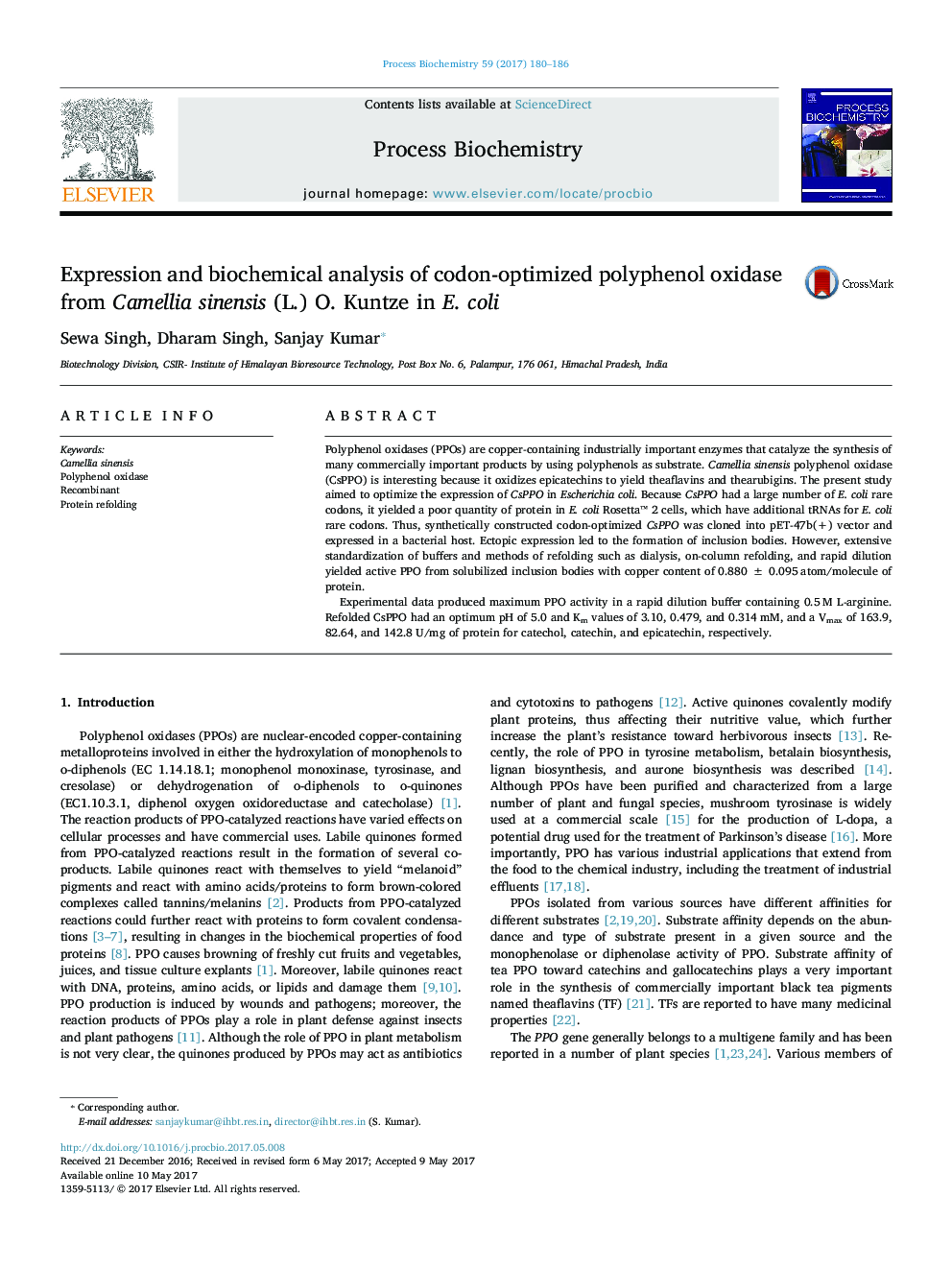| کد مقاله | کد نشریه | سال انتشار | مقاله انگلیسی | نسخه تمام متن |
|---|---|---|---|---|
| 6452945 | 1361503 | 2017 | 7 صفحه PDF | دانلود رایگان |

- PPO from C. sinensis (CsPPO) was cloned and expressed in E. coli.
- A synthetic construct with codon-optimized CsPPO was cloned into a pET-based vector and expressed in a bacterial host.
- Enzymatically active CsPPO was obtained from inclusion bodies after standardizing buffers and methods of refolding.
- ICP-OES analysis showed the metalloprotein nature of CsPPO, an attribute similar to other PPOs.
Polyphenol oxidases (PPOs) are copper-containing industrially important enzymes that catalyze the synthesis of many commercially important products by using polyphenols as substrate. Camellia sinensis polyphenol oxidase (CsPPO) is interesting because it oxidizes epicatechins to yield theaflavins and thearubigins. The present study aimed to optimize the expression of CsPPO in Escherichia coli. Because CsPPO had a large number of E. coli rare codons, it yielded a poor quantity of protein in E. coli Rosetta⢠2 cells, which have additional tRNAs for E. coli rare codons. Thus, synthetically constructed codon-optimized CsPPO was cloned into pET-47b(+) vector and expressed in a bacterial host. Ectopic expression led to the formation of inclusion bodies. However, extensive standardization of buffers and methods of refolding such as dialysis, on-column refolding, and rapid dilution yielded active PPO from solubilized inclusion bodies with copper content of 0.880 ± 0.095 atom/molecule of protein.Experimental data produced maximum PPO activity in a rapid dilution buffer containing 0.5 M L-arginine. Refolded CsPPO had an optimum pH of 5.0 and Km values of 3.10, 0.479, and 0.314 mM, and a Vmax of 163.9, 82.64, and 142.8 U/mg of protein for catechol, catechin, and epicatechin, respectively.
130
Journal: Process Biochemistry - Volume 59, Part B, August 2017, Pages 180-186